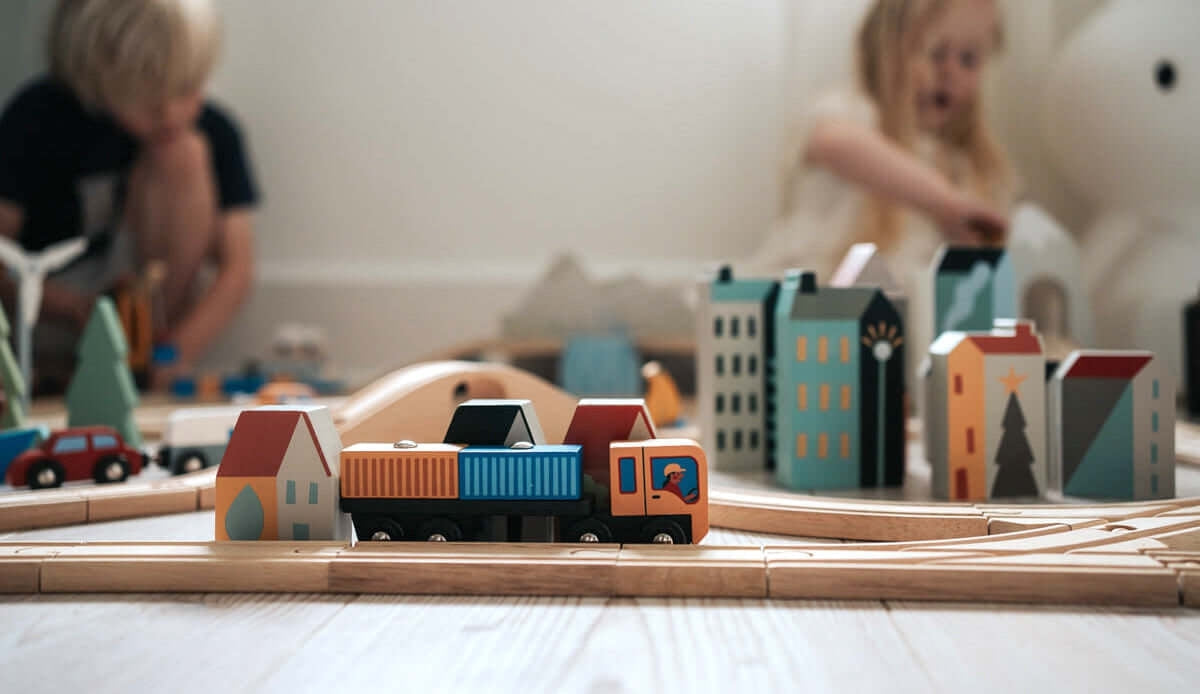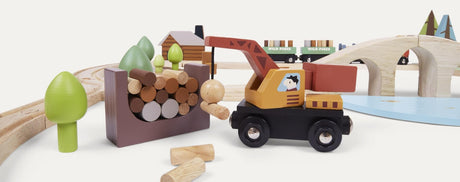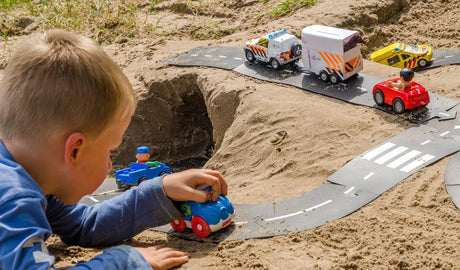How does your child play? Does he play alone or with others? It all depends on his age.
Younger children tend to play alone. They explore the properties of objects and learn to coordinate their movements. There's a lot to think about at this stage of development!
But as they move from toddler to preschooler, children's language develops to the point where they can communicate more effectively. This means that they are able to use it in their games.
Let's look at the developmental stages of play and how children learn to cooperate as they get older and more confident.
The evolution of social play in 6 stages
1. Unoccupied play
At this point, it seems like your baby isn't doing much.
He moves his arms and legs, explores his hands and feet, and probably puts everything he sees in his mouth. He picks up then drops, stacks and places. He explores with his senses.
This work is important for his development, but interaction with others is extremely limited.
2. Solitary play
Solitary play is characteristic of children aged 12 to 18 months. At this second stage, your child continues to play alone, but his play is more focused.
He has a plan.
He builds towers or lines up blocks. He pushes cars and trains . This is the beginning of symbolic play.
He shows little or no interest in reaching out to others. Although he likes the company and proximity of an adult he knows, he will not necessarily share his play with them.
3. Onlooker or spectator's play
Have you ever seen a child standing next to another, watching what they are doing but not participating. That's the spectator's game.
During this phase, the baby shows interest in the people and objects around him. He watches, listens and interacts in a limited way with his environment. He develops his senses and his perception of the world.
On some level he wants to participate, but he doesn't know how to go about it yet.
4. Parallel play
Around the age of 18 months, parallel play appears, where the level of interactions increases slightly.
In parallel play, the toddler still plays alone, but he likes other children to play next to him, although without any real ongoing interaction. Everyone does the same apparent activity, but there is no exchange between them. They will, however, show their mutual interest through looks or vocalizations.
For example, he stands next to his brother at the train table, pushes a train like him, but does not communicate.
The child carefully watches the games of others around him and is attentive to the reactions of adults during these games. These observations also allow him to acquire the basics of life in society.
A child of this age, on the other hand, really likes games that involve social interactions with the adults around him (e.g. hide and seek, chasing games). But it's a sign that your child is ready to play with others.
5. Associative play
Around the age of 2, children gradually adopt association games. For example, children can exchange ideas with each other, lend each other toys, and play in the same way.
In this type of play, the interactions are still short-lived, because the children are not organized and do not act with a common goal.
Very slowly, your child progresses toward the goal of cooperative play. He now interacts with others:
- Here is a block. You can take it.
- Can I play with this car?
Your child talks to his playmates, but still pursues his own goals. You build a tower, it builds a pyramid. You sit side by side and exchange coins.
6. Cooperative play
Then, from 3-4 years old, it is in cooperative play that organization and the pursuit of a common goal appear. Here the child actively participates in group games, engages in role-playing and follows game rules. He develops teamwork, negotiation and problem-solving skills.
Children collaborate to achieve a goal such as building a sandcastle, for example:
- Put the blanket on the chair! This could be grandma's house.
- I am Little Red Riding Hood and you are the Big Bad Wolf.
Final word
Social play plays a crucial role in a child's overall development. It promotes learning, creativity, social, emotional and cognitive development. As educators, our role is to support our children at every stage of their social play development. It is both an exciting and rewarding task that helps shape future generations.
Learning to play with others takes time, but your child will eventually get there. Don't worry if your child isn't ready to share or play with others. He first needs time to explore the materials and concepts on his own. He must also learn to speak.
Give him time, space and a pressure-free environment. There's lots of fun to be had along the way!





